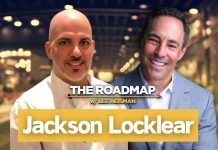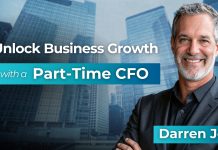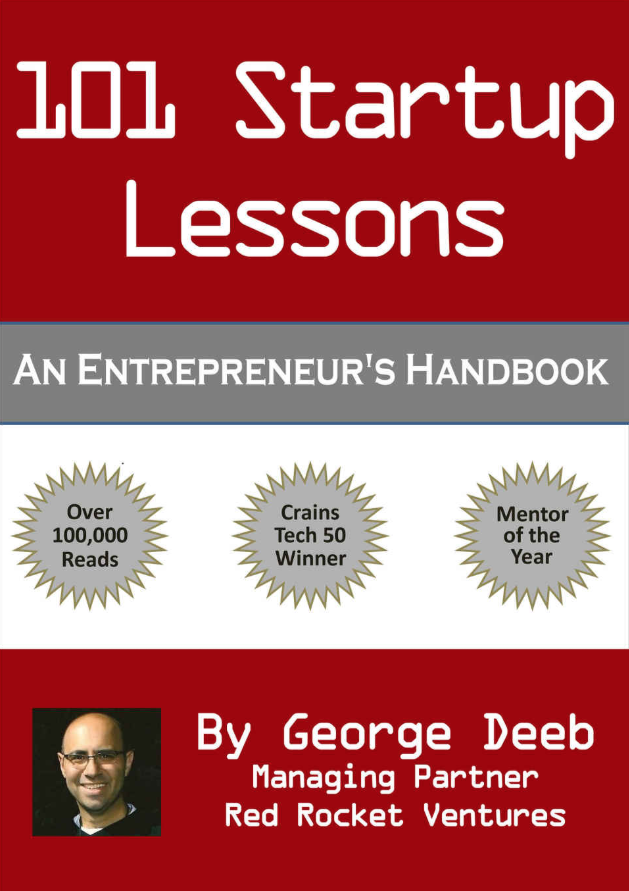Why do so many startups fail? George Deeb, Managing Partner of Red Rocket Ventures and author of three entrepreneurial handbooks is here with 13 unlucky reasons why startups don’t find success. We’ll also gain some insight into things you can incorporate to ensure your business doesn’t fall victim to these 13 reasons.
Jim Fitzpatrick:
So, George, thank you so much for taking the time out of your schedule to join us once again on the show.
George Deeb:
Yeah. Thrilled to be here, Jim. Thanks.
Jim Fitzpatrick:
Yeah. So, I love the fact that you put unlucky reasons. So-
George Deeb:
It was not uncoincidental, I put 13 of those reasons that are so-
Jim Fitzpatrick:
Yeah there you go, there you go, that’s right, that’s right. So I’m going to let you know, there’s so many people that tune into us that have not yet made the leap into opening up their own small business, many have, but there’s a lot that are right on the cusp. Maybe they’ve got a side hustle and they’re trying to make it their full-time gig and maybe looking at storefronts or office space or hiring people, and it’s starting to get real, and we’ve covered so many other things as on the legal side and trademark and copyright things and the checklist that you need to make sure before you do anything, but so take us through this list of 13 items that you have identified with your incredible background in starting small businesses and working with so many small business and entrepreneurs out there that you know, kind of the commonality, these things that keep coming up, it looks like you’ve identified 13 of them. So, I’m going to let you take it from here and let’s start with number one.
George Deeb:
Yeah. Perfect. Number one is making sure you’ve got a big enough idea. If you’re launching a business, you want to make sure you have a reasonable chance of scaling that business. The example I like to use is in the travel industry, a company like Expedia is going after a huge market, right? They’re selling air and car and hotel, and that’s a $250 billion market potential business where they have a chance of reasonably building a 10 or $20 billion company in a huge travel industry. In comparison, when I was running, iExplorer, that was an adventure travel company. That was an $80 billion market. It was not a $250 billion market. So it’s a very small piece of the overall market. But it was still big enough that you could actually build a big enough business if you could get 10% market share, you still have a chance building an $8 billion company in that space.
George Deeb:
The flip side of that is if I was a whitewater rafting company in West Virginia, that’s a very narrow, little, tiny, couple $100 million market where you got three or four competitors running around, you’ll be lucky to build a $10 or $20 million revenue company. So it is making sure you’ve done your homework in terms of how big the market is. You’ve sized it correctly and, and how you can take advantage of it from there.
Jim Fitzpatrick:
There’s some people that come up with different types of inventions, you’ll see moms that have got babies and they’ll say, “Oh, I came up with a pacifier that stays in the mouth longer.” Whatever the case might be. And it seems very one dimensional, that’s the one little thing you’ve come up with but, the market is huge. Is that okay? Even though you have one little element like that, like a pacifier, but you’ve got obviously millions and millions of babies being born every year, right?
George Deeb:
Yeah. For sure. A single product launch is perfectly fine if there’s a reasonable path to sales and success. And I’ll use this example, there was a dental product called OraBrush which was basically a tongue scraping tool to help prevent bad breath. And they got started on YouTube with a viral video. That was just a very simple, basic little product. I would’ve never even thought about it and would ever thought there was a market for something like this. And the video viral sensation took off to the point where the big chains like Walgreens and Walmart and CVS were knocking their doors down, trying to get this product, because all the customers are running in the store looking for it. So, you can even create your own market opportunity.
Jim Fitzpatrick:
Yeah, for sure. Yep. What’s number two?
George Deeb:
Yeah. Number two is making sure you do your research in terms of how to position your product and service up against others, within the space. You’re looking for a white space opportunity where you think there’s a pain point in the market that your product or service can solve and you can do that better or more efficiently than existing solutions in the marketplace. So it is making sure you’ve done your homework of what you’re up against. You don’t want to be the hundredth provider of the same product or service in a heavily competitive, well venture capital back space. You want to be the first mover or the second or third mover in an up and coming space that hasn’t quite yet taken off.
Jim Fitzpatrick:
Good point. Number three,
George Deeb:
Number three is making sure you got a good go to market strategy. I can’t tell you how many start-ups I see they have no idea how to do sales and marketing and start bringing their product to market. Speaking to customers and driving revenues and getting that strategy in place. So to me, that’s the number one thing on this list. You got to know how you’re going to talk to those customers, where they are, who the target personas are, what the offer is and how you’re going to convert those into revenue.
Jim Fitzpatrick:
That’s right. So, no focus, I love this one.
George Deeb:
Yeah. Number four is no focus. And I’ve been guilty of not following this one myself in the past. You can’t build more than one business at a time. So, if you’ve got multiple variations on a theme and different target markets and different products or services you could be taking, that’s all great for the long term, but in the short term, figure out the one thing that you’re going to focus on more than anything else, be very successful in doing that in your market positioning, and your marketing messaging, and your sales and operations, and customer service, and get that one thing right. And own that one thing, that will start to scale. And then when you start to grow, then you can add in products two and product three.
George Deeb:
Number five is making sure you know when to cut your losses. You got to as an entrepreneur, you got to know when to pivot. If something isn’t going well in your first direction, look for an opportunity to change your business model and pivot into a new direction that may have more success. I’ve seen the headstrong entrepreneur that is completely passionate about whatever they’re doing to the point they drive their car right off the cliff, and the business blows up. You don’t want to be the one driving off the cliff. You got to see the cliff coming, get ahead of it, turn the steering wheel, go on a new direction where you might have some more success.
Jim Fitzpatrick:
That’s right. And this is one we could do a whole show on because the question always becomes, when is that point? And how do you really know it? A lot of people think that maybe their idea just… it needs more capital. So, you go out and borrow more money maybe against their house, maybe against assets or friends and family, whatever the case might be. When at the end of the day, you might just have a bad idea that even another a $100,000 isn’t going to help it. So now, ultimately you go through all the new capital and you still have that same bad idea that’s not catching on and now you’re even further in debt. But it’s a tough one, it really is because sometimes you’ll find that it took that extra little oomph or that extra little bit of time and it did take off and things worked out. So, it is one of those very difficult things for entrepreneurs to kind of figure out, when is the time to cut your losses? And as I said, I’d love you to come back and do a whole show with you on just that particular thing. Because we get a lot of questions here at the show about that, should I continue? What should I do at this point in time? And it’s a difficult decision. No passion or persistence. Man, oof.
George Deeb:
Yeah, for sure. You’re going to run into bumps on the road along the way and you’re going to need the enthusiasm and the intestinal fortitude to get yourself through those bad times. And many businesses just fail because you hit a wall and you were unwilling to pick up the sledgehammer and knock it down. You’re going to have those walls get created over time, you guys got to be smart enough and resilient enough to kind of plow right through it and live to fight another day.
Jim Fitzpatrick:
I had no question about that. Wrong or incomplete leadership.
George Deeb:
There’s two parts to that. One is you want to make sure you got a senior team in your business that is skilled in running their particular department. So, you got a good head of marketing that knows how to do marketing and a head of technology knows how to run the technology or operations or finance or whatever it is. And that’s your senior team that, you’re going to live and die by. The success of your business is in their hands.
George Deeb:
When you look at yourself as the CEO, you have to make sure you’re being honest with yourself, are you the right person to actually be leading this business? You may have the greatest idea in the world, but you may be the wrong manager to take it to market. And I see so many entrepreneurs that they’ve got the passion, they’ve got the drive, they can build it from zero to two or three million in revenue, but they don’t know how to take it from there. They don’t know how to get it from two or three up to 20 or 30. And you got to be honest that you got to make sure somebody is in that position that knows how to do that, and you don’t need to be the CEO and the chairman at the same time. You can keep your chairman hat on, you can own a 100% of the company, if somebody else is running it, your investments in better hands with the right person writing the story.
Jim Fitzpatrick:
Which is perfect segue to the next one which is, unincentivized or unmotivated team, man.
George Deeb:
Yeah, for sure. Sometimes the entrepreneur likes to keep a 100% of the equity in their own hands. And I can understand wanting a 100% control and doing what you need to do at the voting level or the strategic level. But I like to spread the wealth, I would rather have stock options in the hands of our senior team, and frankly, as far deep within the organization as you want to push it. I typically set aside 10 to 20% of the equity for the staff, and it’s 10% if you’re going to the senior team, it’s 20% if you’re going to the whole team. And you figure out how to motivate everybody with investment and equity interest in the story. Because if they feel they’re invested in it, they’re going to work harder. Their success will be better, their motivations will be higher, they’ll be more loyal to the company. And I’d rather get the equity in the hands of a broader set of people.
Jim Fitzpatrick:
Yeah. I agree. I agree. Great recommendation and no mentors or advisors, man. That’s a mistake.
George Deeb:
Yeah. I mean the entrepreneur sometimes thinks they’re in this by themselves. That I’m the CEO and I got to figure this out and I’m going to make all the decisions and I got to do it alone. Well, that’s a recipe for disaster because nobody’s smart enough to know everything. And you want to surround yourself by the bests advisors, service providers, mentors, whatever it is that you’re struggling with, because there are many, many people out there that have already solved this problem before, and they can help you up the learn earning curve faster. And they can take a four week research project and narrow it down to a four minute conversation, if you have the right people advising you. So, when you run into those pain points that you’re not exactly sure where to go, talk to somebody that’s done it beforehand. Leverage your network, leverage your people, and figure out who can help you get there faster.
Jim Fitzpatrick:
I totally agree. Totally agree. No revenue model, ever.
George Deeb:
Yeah. I’ve seen lots of businesses where I… “I’ve got this great product or service and it’s really selling well and, but I’m not covering my costs and I can’t get it profitable and what’s wrong with the business?” And the problem is the revenue doesn’t make sense. You need to make sure whatever you’re charging your customer is materially higher than the cost it takes to acquire that customer. So, let’s say you have a $100 product or service, if your marketing costs are more than 30 bucks, you’re probably too high. So, you got to figure out how to keep your marketing under 30, and then you have a fighting chance for success on the bottom line. And it’s okay if the profits are sacrificed in the short run, because maybe you have a high repeat frequency, repeat purchase, and you’ll get your revenues back in transactions two, three, and four, that’s okay. But the long term model has to be a thriving model where there’s a reasonable chance for success and profits down the road.
Jim Fitzpatrick:
That’s right. Perfect segue to the next one, which is less capital than needed and no VC experience. But there’s so many people out there that think that it’s like the old story about the guy that is selling watermelons. He’s buying him for four bucks a piece and he’s selling them for three bucks a piece, and he thinks he needs a bigger truck to succeed. And there’s a lot of entrepreneurs that still subscribe to that where it’s like, “No, I’ll get there, we just need volume, we need this, we need that.” And at the end of the day, just what you were talking about, which is to say, did you sit down and do two plus two has to equal four. You can’t lie to yourself in this area, or you’re going to get into trouble very, very quickly. And so, less capital than needed. That’s a big one.
George Deeb:
Yeah. And it’s part of the budgeting exercise, we were talking about this earlier. If you think you need a million, raise a million and a half or two, build yourself a question, because stuff will come up that you’re not ready for.
Jim Fitzpatrick:
That’s right. That’s right. So, no long term roadmap to ROI, number 12 here.
George Deeb:
The point on this one is, especially if you’re speaking to an investor, if you’re asking an investor to put a million dollars into your company, you need to have a roadmap on how that investor’s going to get 10 million dollars of value out of the company. So, you need to be planning far enough ahead. What is your five year plan? How the revenues going to scale? What’s the valuation multiplier in your industry? If that investor owns 25% of the company, if we went and sold it at reasonable metrics five years from now, does he have a reasonable chance to get that 10x return that they’re looking for? Because if you can’t paint that picture for them. There are hundreds of other startup models that they’re looking at that will, that they just won’t even put any energy into even studying your story, because they don’t think there’s a reasonable path for them to get their money out.
Jim Fitzpatrick:
Yeah, for sure. Number 13, the lucky 13, which is bad luck actually, talk a bit about that.
George Deeb:
Yeah, for sure. I mean, you cannot control being in the wrong place at the wrong time. And I will use the example of a business I’m currently involved with, I’m running the restaurant furniture business right now. Imagine my reaction when I heard about COVID, back in February of 2020. And I’m realizing, oh my God, all these restaurants are going to close, those businesses are going to suffer, 30% of them are going to go out of business, there’s going to be no purchasing of restaurant furniture for the next year was sort of the conclusion. And it could be a really scary thing being in the wrong place at the wrong time. You can’t control that, it is what it is, but the good news is as bad as you think it could be, it may end up being better. Maybe yeah, the indoor furniture is not going to sell, but maybe people want to open outdoor spaces to help themselves survive. And they’re opening patios with outdoor furniture and that will get you through the next year of bumpy sales. So, plan for the worst and hopefully things come out better.
Jim Fitzpatrick:
That’s right. That’s right. A friend of mine is in the lumber business. And he said, “We were just shaken by this COVID situation, construction shut down for a couple of months.” And lo and behold, every restaurant called him and said, we need as much lumber as we can get, because we’re allowed to have outside decks in so many states and serve people outside. So, you found all of these restaurants building outside decks to their restaurants that they never planned on having, but it was the only way for them to be able to stay open. He said, “I can’t get enough lumber.” And then of course, shortly after that, you had people improving their backyards and buying new homes. And so obviously lumber sales are up a 100% or I should say the cost of them are as high as a 100% than what they were prior to COVID hitting.
Jim Fitzpatrick:
And of course the auto industry, same situation in the first couple of months, it was terrible. Every car dealer out there was running scared thinking, oh my God, who’s going to want to buy a new car. And we’re out business and nobody has the money. They don’t need to go to work. They’re working from home. They don’t need their car. Well, that lasted about two months, lo and behold people realize that their car is their second safest place, outside of their home. And by the way, we’re getting a check from the government for a few $1000. Oop, let’s go ahead and take that vacation in our new car. And obviously car sales are at an all time high.
George Deeb:
Yeah, for sure. And the point here on this bad luck and timing is plan for a rainy day. Keep a cushion in reserve that you’re never going to touch that if that rainy day comes, you’re prepared and can get through it, or at least have a few months to set a strategy and a reaction plan to that disaster. So don’t run so thin that you don’t have that kitty to lean on.
Jim Fitzpatrick:
And don’t count on their PPP money coming from the government on the next downturn, because that’s not going to be there either for the most part. So, I would take another pandemic, but you’re not going to qualify, just because of the fact that you’ve had a few bad months back to back months and “Oh, let me call the SBA and get a check from them.” Doesn’t work that way. It’s crazy. But George Deeb, I want to thank you so much for joining us, once again, on The Atlanta Small Business Show, our viewers get so much out of your visit with us. So we appreciate all the time and the contribution you’ve given us so, till next time I’m looking forward to it.
George Deeb:
Thanks a ton Jim, it’s good seeing you again.
Jim Fitzpatrick:
You too, thank you so much.
The Atlanta Small Business Network, from start-up to success, we are your go-to resource for small business news, expert advice, information, and event coverage.
While you’re here, don’t forget to subscribe to our email newsletter for all the latest business news know-how from Atlanta Small Business Network.








